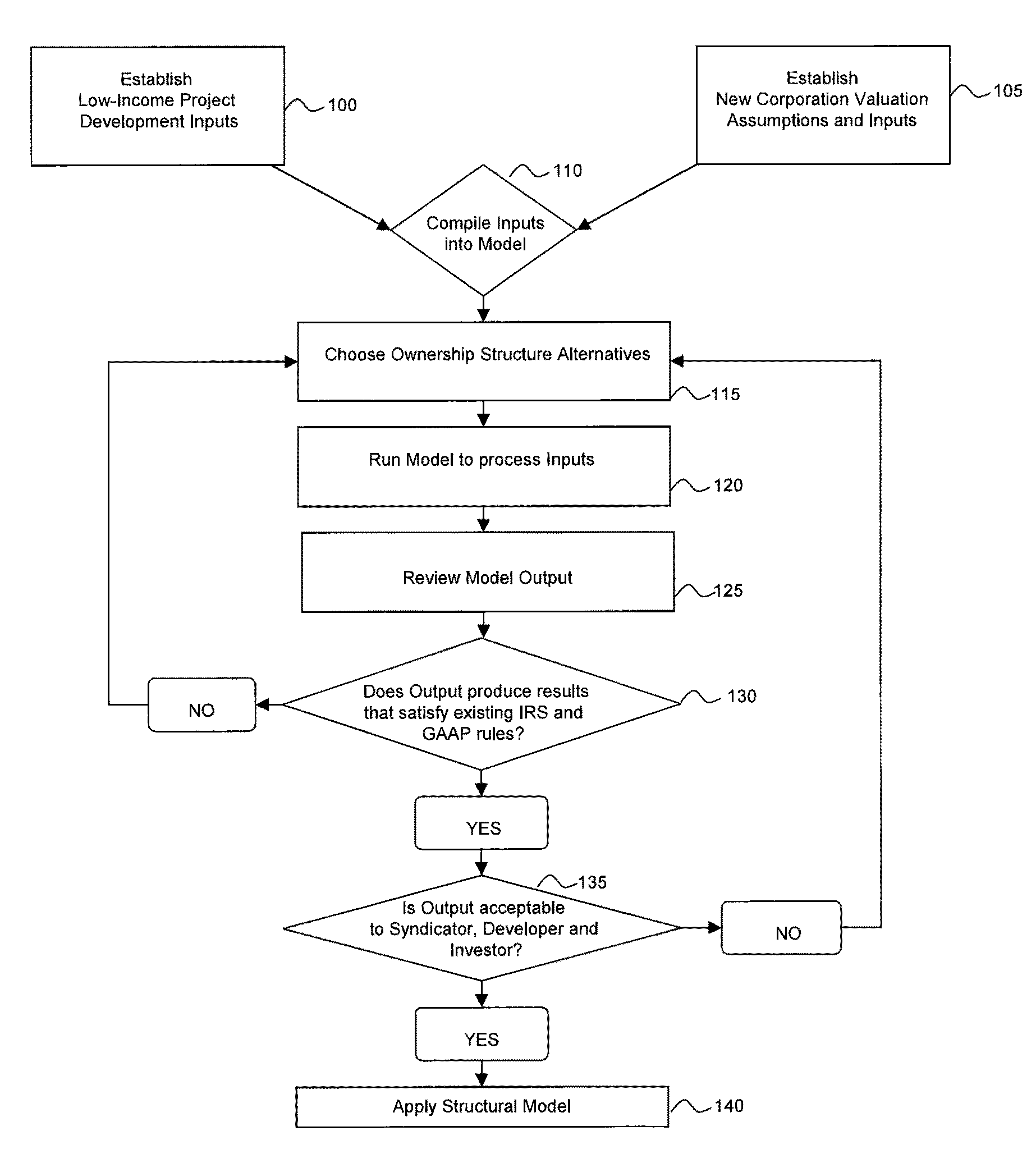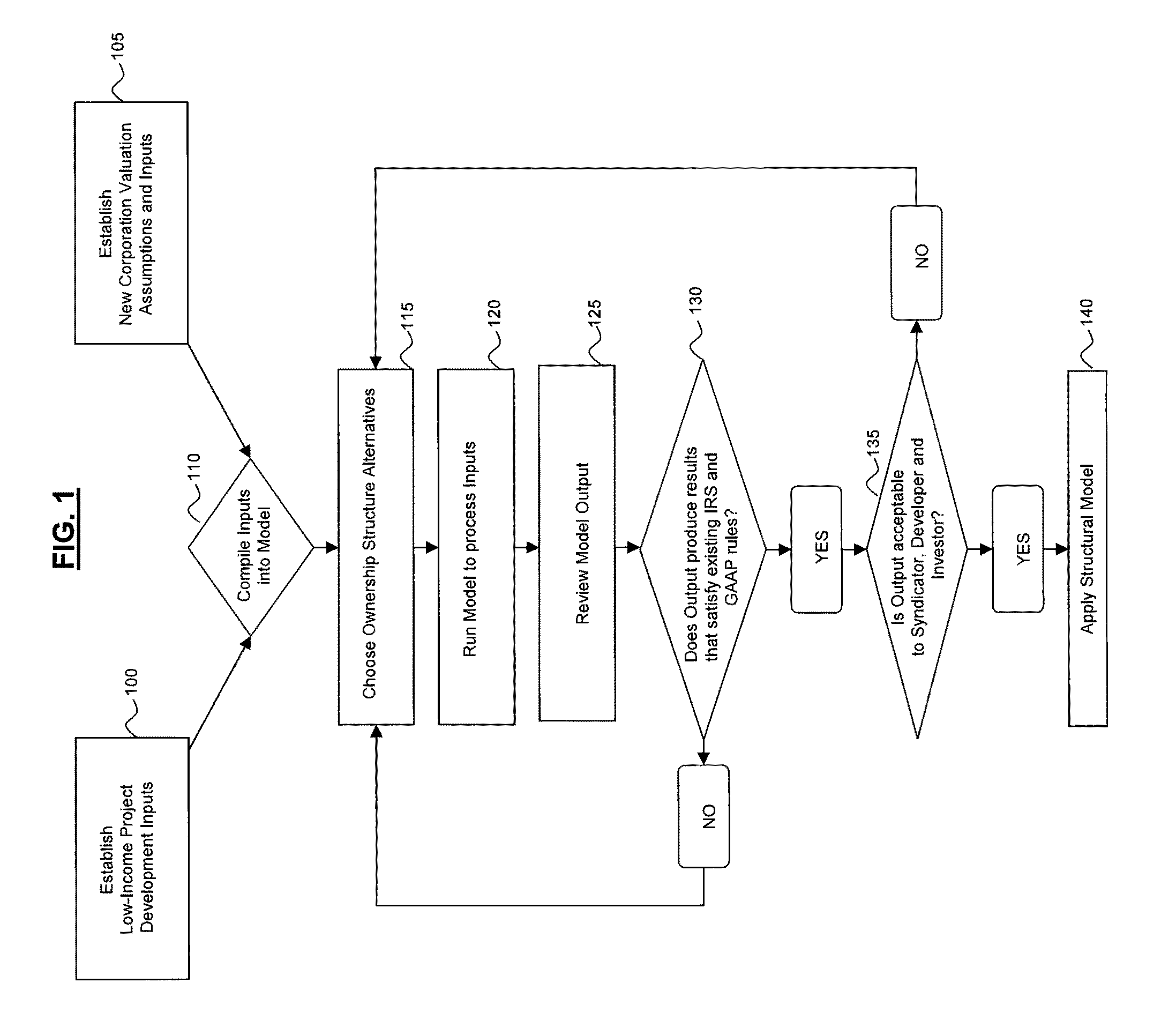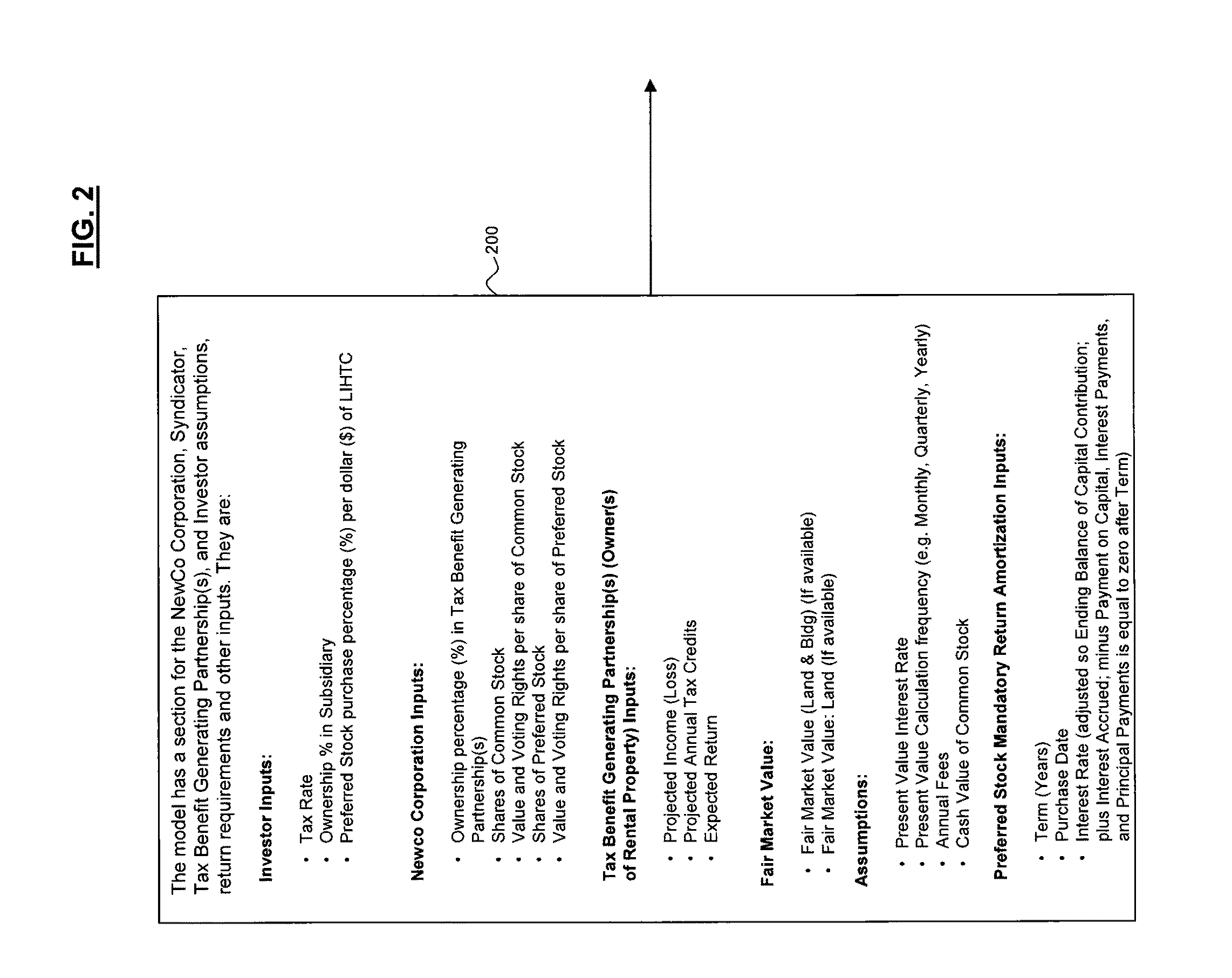Structuring method and associated modeling software for tax credit investments that will generate positive earnings before income tax depreciation and amortization (ebitda) under generally accepted accounting principals (GAAP)
a technology of tax credit investments and structured methods, applied in the field of complex financial transactions assessing, structuring and documenting, can solve the problems of reducing affecting and causing significant negative effects on the ebitda of tax credit investors
- Summary
- Abstract
- Description
- Claims
- Application Information
AI Technical Summary
Benefits of technology
Problems solved by technology
Method used
Image
Examples
Embodiment Construction
[0042]The present invention relates to a method and provides for a more efficient structure for the development of new and existing low-income projects, as well as a more effective means of utilizing new and existing tax credits associated with such projects, according to an embodiment of the invention.
[0043]In a preferred embodiment if the invention, federal low-income housing tax credits generated by low-income housing projects are transferred to an investing company (the “investor”) in such a manner that the investment is treated as a debt instrument for financial accounting purposes. The investor's yield on the tax credit investment is earned for financial accounting purposes in the form of interest payments on a self-amortizing debt instrument, which generates positive EBITDA. Nonetheless, for federal income tax purposes, the investor would continue to be entitled to claim all tax credits and losses associated with its investment in the same manner as it would were it employing...
PUM
 Login to View More
Login to View More Abstract
Description
Claims
Application Information
 Login to View More
Login to View More - R&D
- Intellectual Property
- Life Sciences
- Materials
- Tech Scout
- Unparalleled Data Quality
- Higher Quality Content
- 60% Fewer Hallucinations
Browse by: Latest US Patents, China's latest patents, Technical Efficacy Thesaurus, Application Domain, Technology Topic, Popular Technical Reports.
© 2025 PatSnap. All rights reserved.Legal|Privacy policy|Modern Slavery Act Transparency Statement|Sitemap|About US| Contact US: help@patsnap.com



